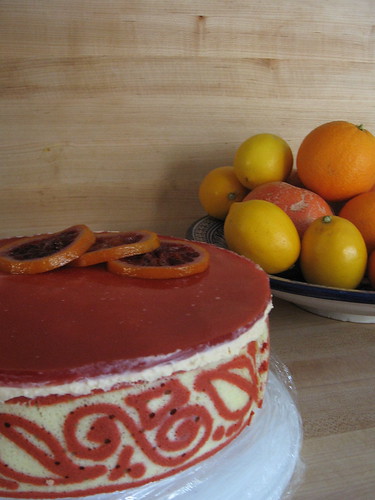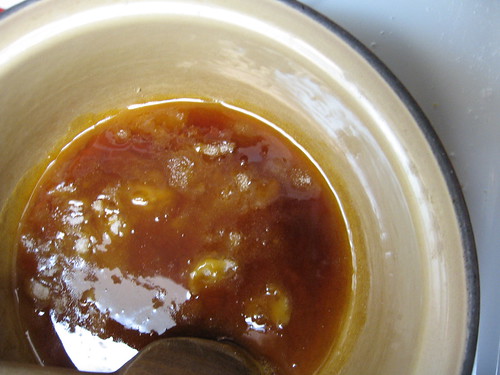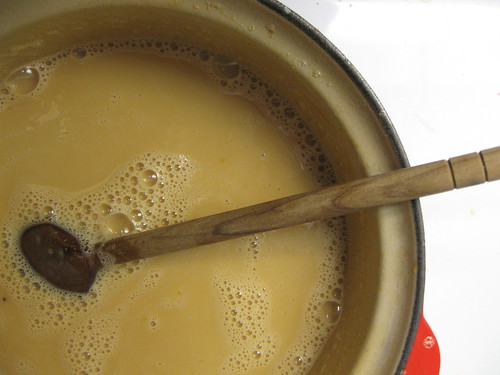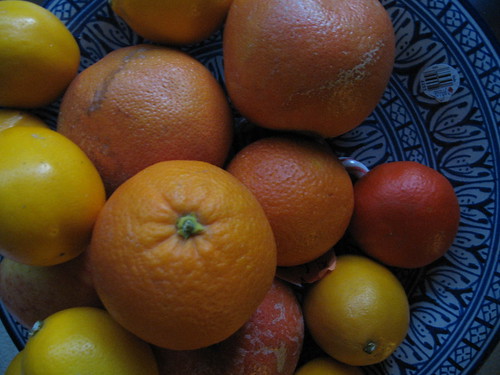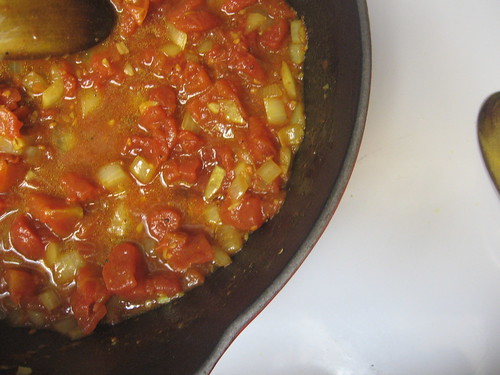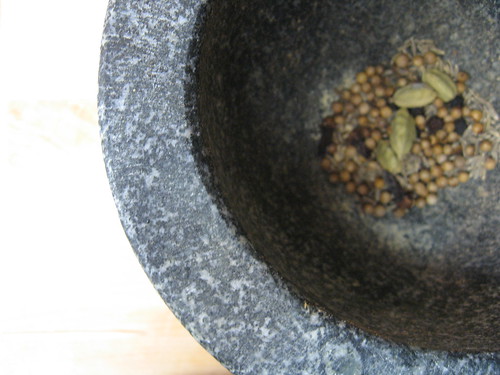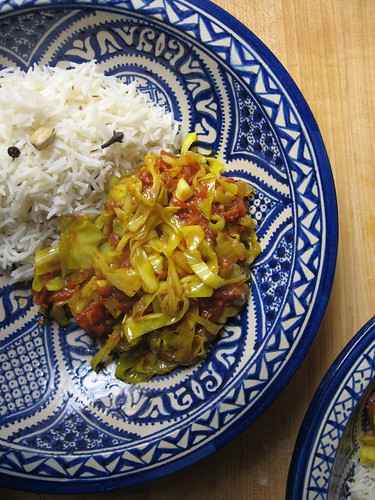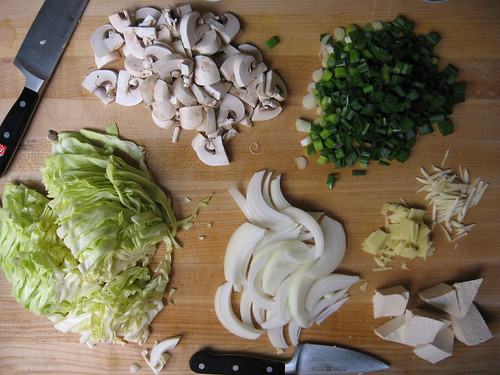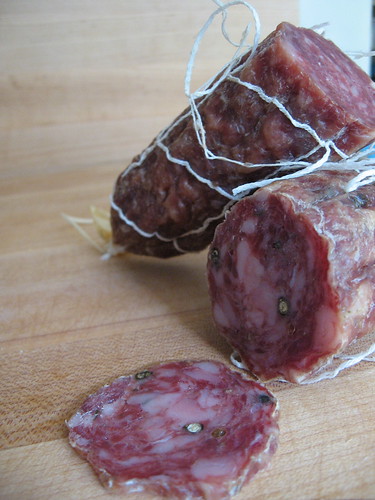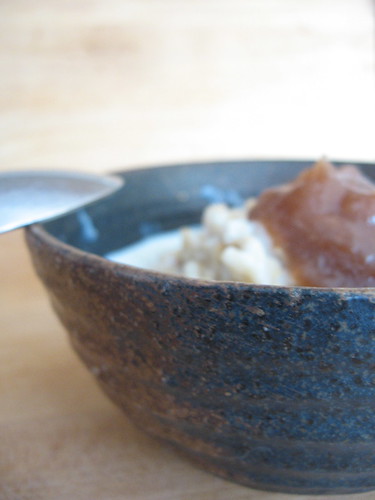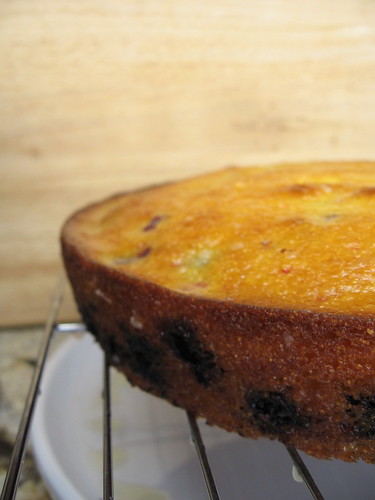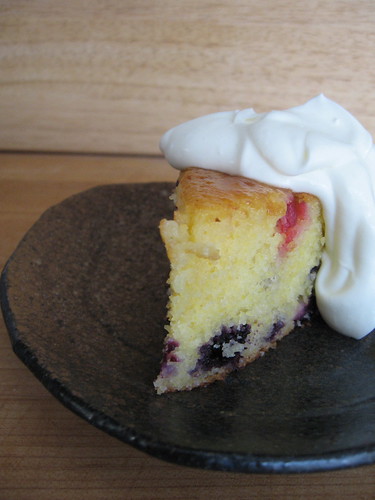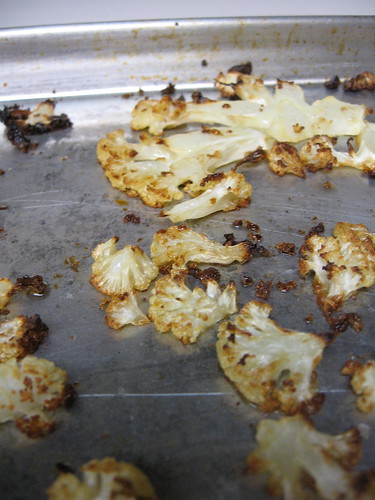
With each bite, I fell more in love, and by the end of dinner I was eyeing the leftovers with anticipation. Who would have thought that I could be brought low by little more than a head of cauliflower and a box of pasta?
My love for cauliflower isn't well documented on this site, but it helps me get through every winter. I love it curried with potatoes or peas; I adore it sautéed or fried with cumin and salt, Moroccan style; I can't get enough of it puréed into a simple, perfect soup. Like so many things, I tend to fall into a rut, but a vague memory of a recipe seen once before inspired experimentation last weekend. Thin slices of cauliflower were roasted until golden brown and caramelized; cut into chunks and mixed with pasta, it was very nearly sublime. Unfortunately, my lack of attention to timing had led to a lackluster final result, and the lack of parsley in our kitchen contributed to a photograph that resembled baby food more than a fantastic winter pasta dish.
After several days of thought and many hours of anticipation, methods were tweaked, timing was thought out, and herbs were purchased. The result? Heaven.

I could roast a bushel of cauliflower, dressed in nothing more than olive oil and salt. I'd admire its pretty caramelized hue, make a little pillow out of it, and eat nothing but its lovely florets until there was nothing left. I've hidden batches of roasted cauliflower before, in order to save it to add to risotto and the occasional quinoa salad, but it always seemed to take away from the cauliflower—most often, I've gone back to a pile of burnished brown slices next to a piece of seared fish or supplementing a dinner of good bread and cheese. This dish, however, takes all the goodness of roasted cauliflower and makes it into a meal.
The sweetness is complemented by barely-caramelized onions; a liberal amount of dried breadcrumbs add some body and carry the flavor into every bite; the primary seasoning is black pepper, with the smallest pinch of red pepper flakes for a little zing. While any chunky shape of pasta will do, I yielded to my occasional impulse for whimsy by choosing campanelle, bell-shaped, ruffled, and echoing the shape of the cauliflower.
This is a simple dish, so I recommend the freshest cauliflower you can find—if you typically buy from the supermarket, you may be surprised by the flavor of good, fresh, local cauliflower. Also, for all that's beautiful in the world of food, get some fresh parsley (or at least something green) to mix in before serving—even the most delicious dish will disappoint if it looks as monochromatic and bland as this one does without it.
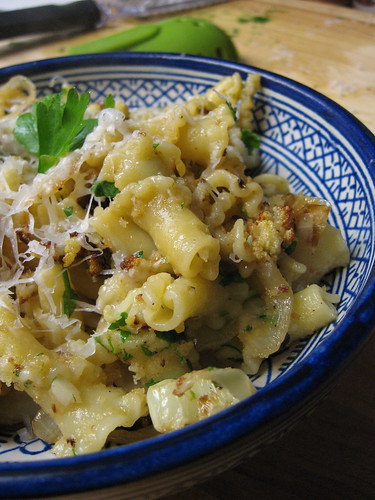
Pasta with Caramelized Cauliflower and Breadcrumbs
For the caramelized cauliflower:
½ large head cauliflower (or 1 small)
olive oil
sea salt
For the pasta:
2 tablespoons butter
olive oil
½ large onion, sliced
black pepper
pinch red pepper flakes
3-4 cloves garlic, minced
¼ cup fresh parsley, minced
¼ cup dried breadcrumbs (preferably fresh)
generous ¼ cup grated pecorino cheese
½ pound chunky pasta, such as campanelle (farfalle, orecchiette, and penne would all be acceptable substitutes)
Preheat the oven to 425ºF. Slice the cauliflower about ¼ inch thick (much of it may crumble, which is okay). Spread in a single layer on two rimmed sheet pans. Drizzle on both sides with olive oil and sprinkle with sea salt. Roast for 20-30 minutes, turning once or twice during the cooking time, until the cauliflower is tender and well browned on both sides. Remove from the oven and set aside.
Fill a pot with water and put it on to boil. When the water comes to a boil, salt it liberally and add the pasta. Cook until al dente, then drain, reserving ¼ cup cooking water (and set aside, if needed).
Set a large, heavy skillet over medium heat and melt the butter with a slosh of olive oil. Add the sliced onions and season with salt, black pepper, and the red pepper flakes. Cook, stirring from time to time, until the onions are tender and beginning to brown, about 20 minutes. (The pasta should be mostly cooked at this point). Add the garlic and cook 1-2 minutes more, until quite fragrant. Cut the cauliflower into bite-sized pieces and add to the pot; reduce the heat to low and stir gently until the cauliflower is heated. Add the drained pasta and reserved cooking water as needed to make a uniformly moist pasta.
Add the parsley, breadcrumbs, and cheese, and stir just to combine. Top with additional cheese if desired. Serve. Eat with abandon.
Serves 3-4
